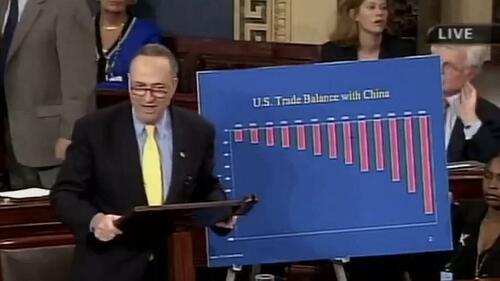
JPMorgan’s Bold Prediction: ECB to Implement Four Rate Cuts Amid Economic Uncertainty
Tháng 4 8, 2025
April 2025 Treasury Yields: Understanding Volatility and Economic Implications
Tháng 4 8, 2025Understanding the Evolving Landscape of U.S.-China Tariffs
The ongoing discussions surrounding tariffs on China have significantly shaped U.S. trade policy over the years. The complexities of these trade relations involve historical precedence, political maneuvers, and evolving economic strategies that continue to influence both nations’ economies. This blog post will navigate through the historical context set by key figures and the contemporary developments that have brought tariffs back into the spotlight.
Historical Context: Chuck Schumer’s 2005 Stance on Tariffs
In the early 2000s, concerns regarding China’s trade practices began to escalate. Senator Chuck Schumer, a prominent advocate for reform, made headlines in 2005 by proposing a 27.5% tariff on Chinese goods. Schumer’s motivation stemmed from dissatisfaction with what he viewed as unfair trade practices executed by China; particularly, he highlighted issues such as intellectual property theft and currency manipulation. Alongside Senator Lindsey Graham, Schumer introduced the ‘China Free Trade Bill,’ which aimed to address these critical concerns and ensure fairer trade practices between the two superpowers.
This historical perspective sets the stage for understanding the current landscape of tariffs. Schumer’s call for action highlighted a growing sentiment in the U.S. that prompted future administrations to rethink their strategies regarding international trade, particularly with China.
Current Tariff Developments in U.S.-China Trade Relations
Fast forward to the present day, and the topic of tariffs has resurfaced with renewed vigor. Under the administration of President Donald Trump, a comprehensive tariff plan was initiated. Trump’s strategy involved imposing significant duties on imported goods, primarily targeting China. Notably, a 34% tariff was levied on Chinese products, a decision rooted in the pursuit of reciprocal trade practices that would benefit U.S. manufacturers and workers.
The economic implications of these tariffs were profound. In a tit-for-tat response, China retaliated with its own 34% tariff on U.S. goods, thus escalating the trade tensions between the two nations. This continual back-and-forth not only placed strains on diplomatic relations but also raised concerns among American businesses and consumers regarding the potential for increased prices and diminished access to products.
Legislative Actions: The “Trade Review Act of 2025”
In light of these growing tensions and the unprecedented tariffs implemented by the executive branch, there is an emerging push within Congress to reassess and redefine the administration’s power over trade decisions. A significant legislative response is the bipartisan Senate bill titled the “Trade Review Act of 2025.” This proposed bill aims to require congressional approval for any new tariffs imposed by the executive branch. By insisting on legislative oversight, the bill seeks to reassert Congress’s constitutional authority in shaping U.S. trade policy.
The discussions around this bill reflect a critical move towards enhancing transparency and accountability in trade negotiations. As trade relations evolve, it becomes imperative for lawmakers to balance national interests with global economic realities, ensuring that trade policies benefit the American economy without jeopardizing international relationships.
Conclusion
The issue of tariffs on China remains a dynamic and multifaceted aspect of U.S. trade policy. Understanding the historical context, current developments, and legislative actions can provide clarity on the complexities of these trade relations. As discussions continue to unfold, stakeholders from both sides are likely to engage in negotiations that could redefine the course of trade for years to come. Staying informed about these changes is essential for both consumers and businesses as they navigate an increasingly interconnected global economy.

